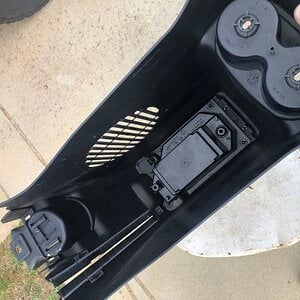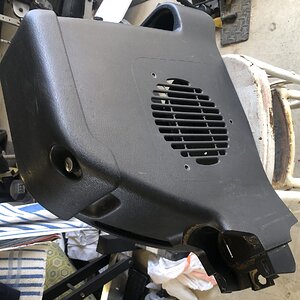AnthonyMartello
Banned
Hello Community,
Motorcycles are typically less visible than cars, trucks or other automobiles on the road--especially at night. Because of this, there are many regulations set by law and other standards of production that detail motorcycle lighting requirements. These regulations help make a motorcycle as visible as possible while providing the best visibility for the motorcyclist.
Headlights: Headlights, as with nearly all vehicles, are the brightest and most visible lights on the vehicle. Headlights also provide the most visibility for the driver. The common law for a motor vehicle's (including motorcycles) headlights states that they must be mounted at a height of no less than 22 inches and no more than 54 inches. There is no single standard for maximum intensity of headlight lighting because the abundance of manufacturing design make it nearly impossible to regulate. However, federal law states that headlights cannot be red or blue or beacon lights, including the conduction of flashing or alternate lighting. Nearly all states also require daytime working headlights for motorcycles.
Rear Lights: The rear lights on a motorcycle include the night and daytime running lights and the brake lights. Break lights, as with any operating vehicle, are legally required. These lights are required to be red, but are subject to a leniency in the variation of color red. The break lights are required by federal law to be clearly visible during the night and day. However, the running lights are only required at night.
Turn Signals: Only a few states allow hand signaling on a motorcycle. However, nearly all motorcycles built within the last 30 to 40 years have been designed and equipped with turn signals. Federal turn signal requirements merely state they cannot alternate in color and may only consist of yellow or white color.
Additional Lighting: Additional lighting may be added to a motorcycle, but there are certain laws restricting the type and function of additional lighting. The law states that any light on a vehicle, other than a headlight, cannot produce a beam with an intensity greater than 300 candle power and not reach a point of the roadway beyond 75 feet of the vehicle. These lights also may not conduct flashing or alternate lighting.
Best Regards,
Anthony Martello
Lighting Motorcycle
Motorcycles are typically less visible than cars, trucks or other automobiles on the road--especially at night. Because of this, there are many regulations set by law and other standards of production that detail motorcycle lighting requirements. These regulations help make a motorcycle as visible as possible while providing the best visibility for the motorcyclist.
Headlights: Headlights, as with nearly all vehicles, are the brightest and most visible lights on the vehicle. Headlights also provide the most visibility for the driver. The common law for a motor vehicle's (including motorcycles) headlights states that they must be mounted at a height of no less than 22 inches and no more than 54 inches. There is no single standard for maximum intensity of headlight lighting because the abundance of manufacturing design make it nearly impossible to regulate. However, federal law states that headlights cannot be red or blue or beacon lights, including the conduction of flashing or alternate lighting. Nearly all states also require daytime working headlights for motorcycles.
Rear Lights: The rear lights on a motorcycle include the night and daytime running lights and the brake lights. Break lights, as with any operating vehicle, are legally required. These lights are required to be red, but are subject to a leniency in the variation of color red. The break lights are required by federal law to be clearly visible during the night and day. However, the running lights are only required at night.
Turn Signals: Only a few states allow hand signaling on a motorcycle. However, nearly all motorcycles built within the last 30 to 40 years have been designed and equipped with turn signals. Federal turn signal requirements merely state they cannot alternate in color and may only consist of yellow or white color.
Additional Lighting: Additional lighting may be added to a motorcycle, but there are certain laws restricting the type and function of additional lighting. The law states that any light on a vehicle, other than a headlight, cannot produce a beam with an intensity greater than 300 candle power and not reach a point of the roadway beyond 75 feet of the vehicle. These lights also may not conduct flashing or alternate lighting.
Best Regards,
Anthony Martello
Lighting Motorcycle


